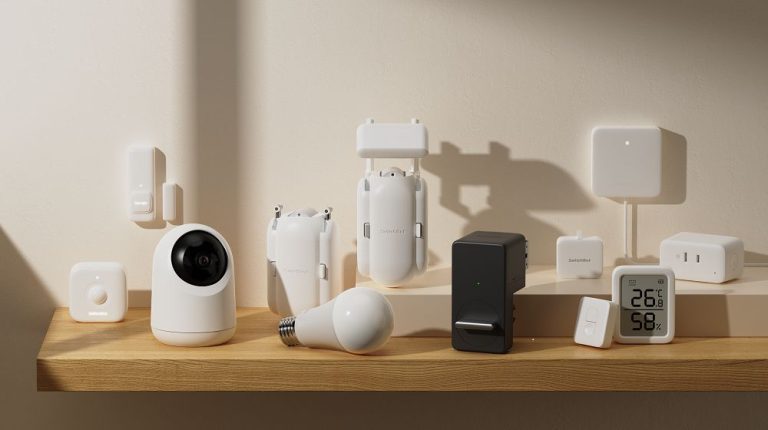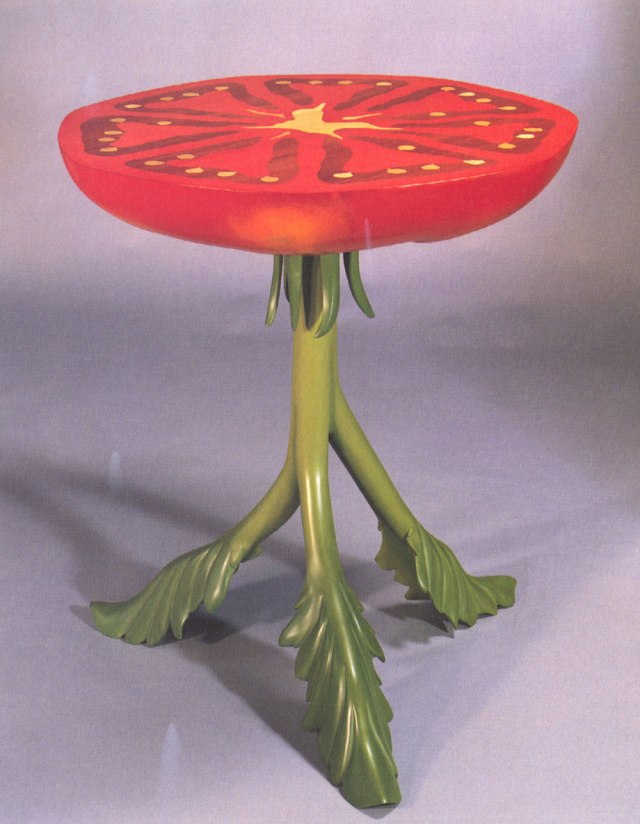Paint Buyer Beware –
There’s a widespread belief that anyone who can hold a brush is capable of painting. What’s up with the spatters on the baseboard and floor? I asked a painter hired by the woman who’d rented my bungalow back in 2003. “You need to get used to owning a rental” was his response. Translation: Shoddy work is good enough in rental properties. (I strongly disagree.) Between peeling or chipping paint due to improper surface preparation, varying shades or sheens caused by insufficient stirring, drips, spatters and bugs – literal or figurative – in the finish, America’s houses bear witness to generations of humans who should probably never have been allowed to apply paint.
A recent job reminded me that the same goes for those who work in paint stores. There’s a big difference between pressing buttons based on a manufacturer’s formula and understanding color theory, along with the chemical components of contemporary coatings. After days of anxious deliberation and nearly $40 in samples, my client decided on a cabinet color. I called in the order for a gallon and drove to the paint store first thing the next morning to pick it up. Before leaving the store I asked the clerk to open the can – experience has taught me it’s worth taking a minute to check the color instead of waiting until you’re at the shop or jobsite to discover it’s not what you ordered.
Most of the time the color is spot on and I go on my way, but this time it looked off. I asked the clerk, Chris Slater, to compare it to the card. It was not the same color.
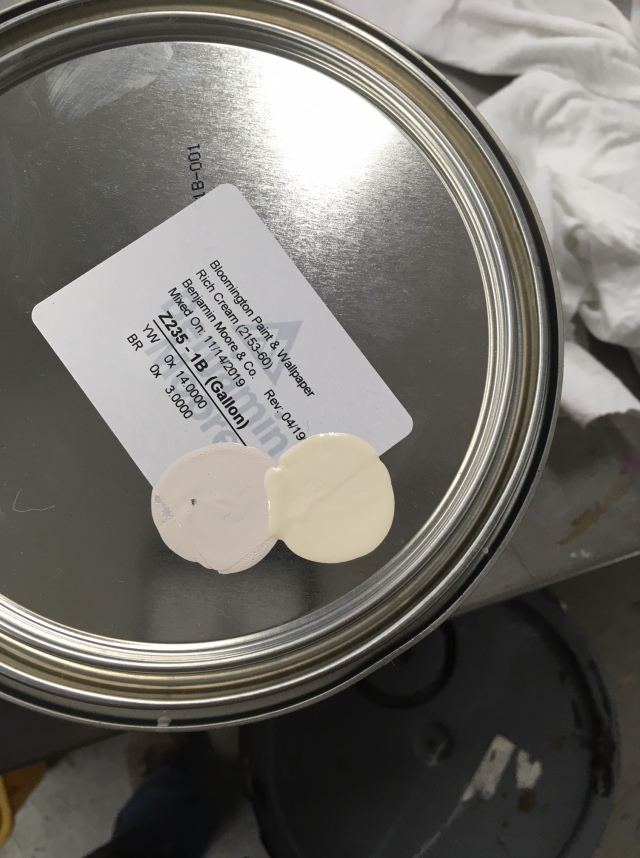
Chris, who has worked at the store about 16 years, explained that the cause was likely the colorant; I was buying paint with a different base from that sold for samples, and although he had mixed the gallon with the formula designed for the product I was buying, on rare occasions the shades don’t match. Apparently we were dealing with one of those rogue, hard-to-match colors.
He said he would custom-mix a gallon. He began the process by using the computer to generate a formula for the match based on the color chip. The result still wasn’t quite right; he thought he could get closer with a custom match based on experience and his own eye.
The next morning I picked up the gallon of paint, which seemed perfect.

I applied the first coat to the smallest cabinet, just in case it turned out not to be right. Once it had dried, my client said it was close…but still a little lighter and yellower than she was hoping for. Had I been working in Bloomington, I would have run the can back to the paint store, knowing the crew would do whatever was necessary to get it right. But I was 60 miles away. (Fortunately, this is the first time I’ve had this experience in many years.)
The following morning I asked Chris to speak with his rep at Benjamin Moore. This was not the paint store’s fault, but an error by the manufacturers, whose job it is to ensure that each of the subtle gradations in color they advertise is reproducible across the range of bases they sell.
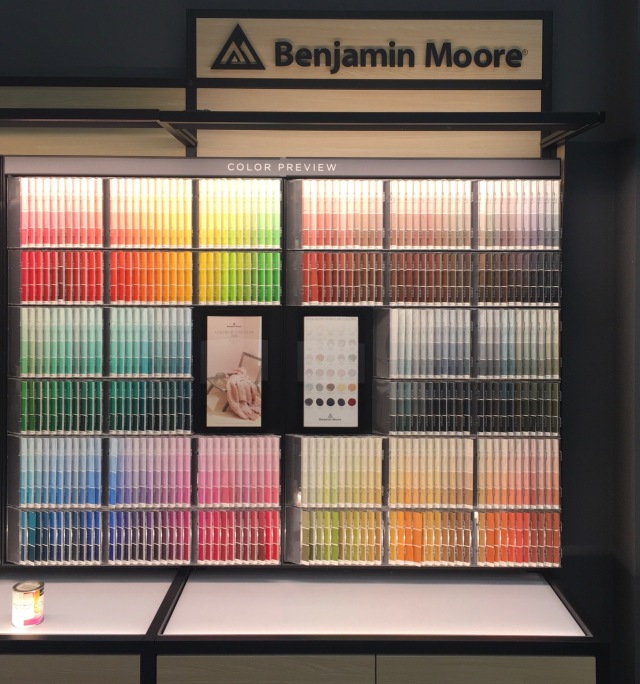
Chris went through his paces, mixing three new gallons of paint at no charge, authorized by the Benjamin Moore rep.
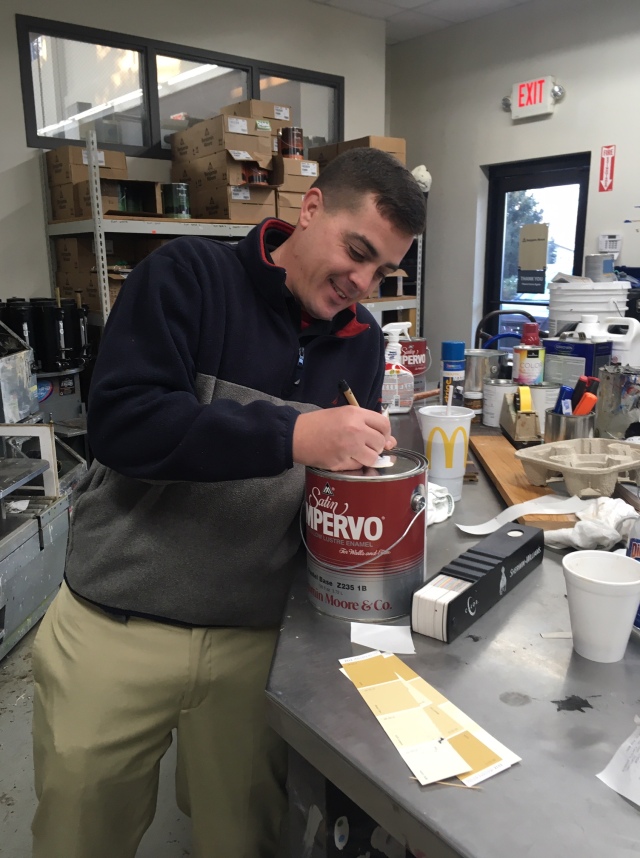
I brushed a sample of each on a section of wall that will be tiled and let them dry. Luckily, my client loved one of them and I was able to finish the job.
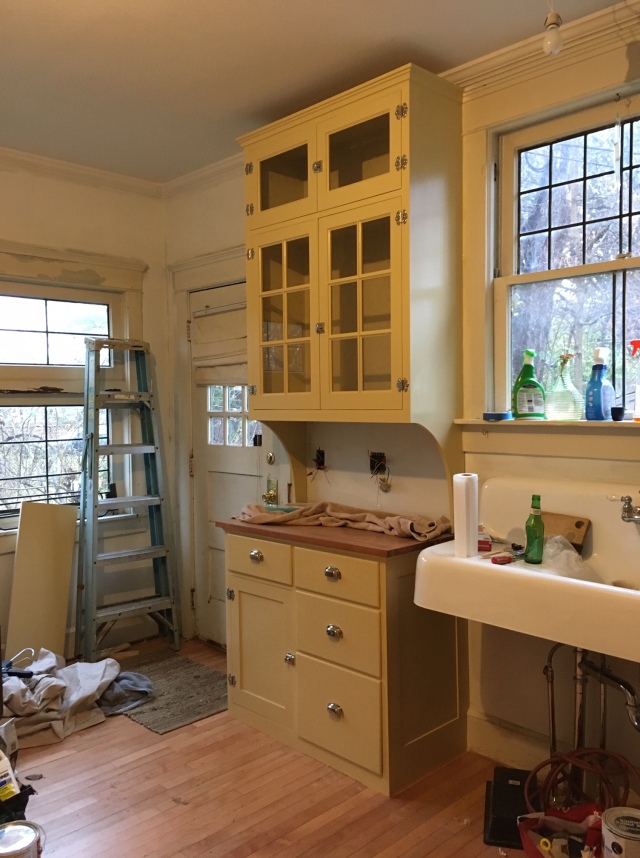
The Moral of the Story
This experience cost me several hours of productive work and meant that other customers in the paint store had to wait longer than they should have to be served, while Chris, one of a limited number of employees, was working to make our customer happy. Although it was frustrating for all of us, it was a great example of working together to solve a problem, demonstrating a level of knowledge and commitment you’re unlikely to find in big-box stores. The paint store I frequent, Bloomington Paint and Wallpaper, is family-owned and has been in business for almost a century. It’s still in business largely because, in addition to selling products of high quality, it has a strong service ethic and places a premium on training its employees.
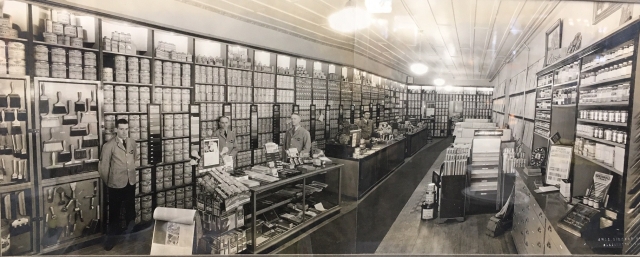
I’ve found this kind of service invaluable, so in an era that’s increasingly tough on locally owned businesses, I do my part to keep it going.
– Nancy Hiller, author of “Making Things Work”
